In one of our Level One design modules, U101, students are shown how to create an abstraction from a photograph to communicate a story. It’s a good technique to use, and great for building confidence in visualising ideas. I saw this process played out when visiting the fascinating home of Edward Linley Sambourne (1844-1910) last week, a cartoonist for Punch, and great grandfather of photographer Lord Snowden. He constantly drew as a child but didn’t go on to have formal training in fine art – his father didn’t think of it as a sensible career; instead, he became a marine engineering apprentice. However, through a fellow apprentice, he managed to get his work seen by the editor of Punch which led to an illustrious career with the publication. He did later go to life classes to consolidate his drawing skills, but at first, he used postcards and magazine images as reference. Film photography was in its infancy, but having bought a camera, this then became his major resource for developing his cartoons. He, his family, servants and friends, dressed up and posed in his backyard, and once the photos were printed up, he would trace over them as the basis of his latest cartoon.
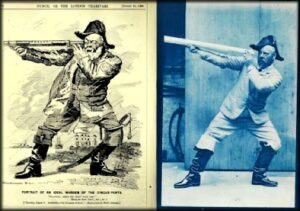
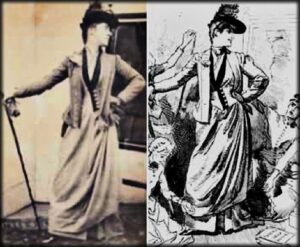
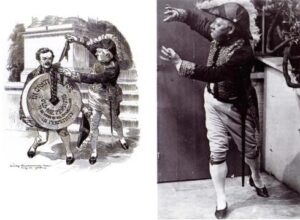
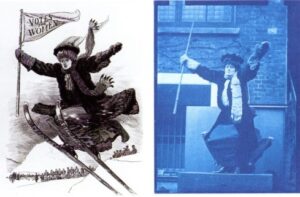
Going into the bathroom, I couldn’t imagine a relaxing soak in the tub, but quickly learned that he had converted it to have a flat bottom to enable the development of his photos, and added a flip-down shelf as a work bench. The whole house must have smelt like a darkroom!
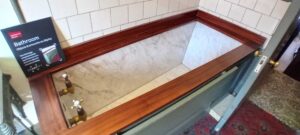
It’s easy to see how the family lived, as their house remains pretty much as it was in Sambourne’s time, including his drawing studio up on the top floor. There you can also see his ‘detective camera’ on the shelf above the desk!
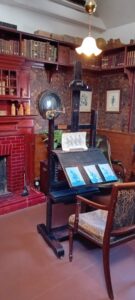
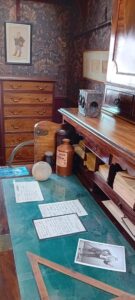
Having got interested in photography he took it beyond just being a tool for his cartooning. In 1893 he joined the local camera club and greatly enjoyed street photography. His detective camera, disguised as a pair of binoculars, took photos at right angles, enabling him to take candid shots of people going about their daily business without them knowing. They provide a great record of life at that time, and of contemporary fashion.
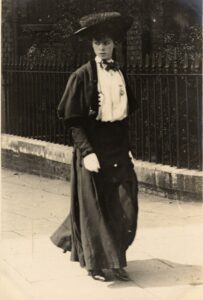

Sambourne House is conveniently located for design enthusiasts. The Design Museum is literally just round the corner and then, a couple of streets further down, you come to Melbury Road and the homes of the Holland Park Circle, an informal group of late 19th century artists. Many of Sambourne’s richer friends lived there, and although he couldn’t afford a house on their scale, he was able to invest in the interior of his own home in a manner to rival them. He used fashionable wallpapers by William Morris on both the walls and ceilings, in addition to other luxurious papers, together costing the equivalent of £4000 at today’s value. There is also a wealth of stained glass and costly artefacts including a range of Chinese ceramics all over the house.
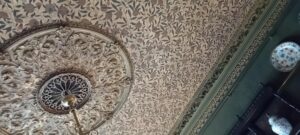
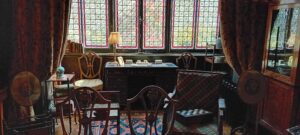
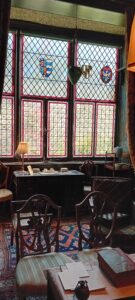
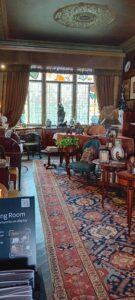
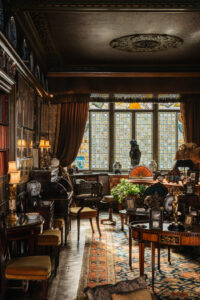
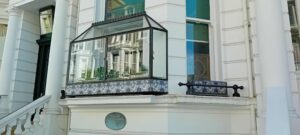
It’s worth popping round to Melbury Road for the architecture alone. Sambourne’s friends included Luke Fildes whose studio house is now owned by Robbie Williams. Next door, students of Module A111 will recognise Led Zeppelin’s Jimmy Page’s house, The Tower House by William Burges.
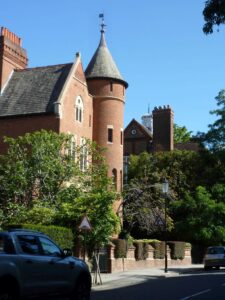
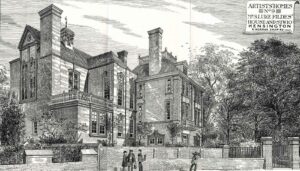
Another of Sambourne’s friends, artist Colin Hunter’s house, another large studio house, was sadly destroyed in the war, but the beautiful 8 Melbury Road still stands, once the residence of his friend, painter, Marcus Stone.
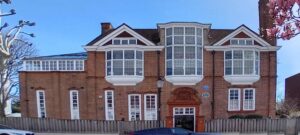
Stone’s house backs onto the more well known Leighton House at 12 Holland Park Road, and can be seen from the latter’s studio and garden. Leighton House, the residence of leading Victorian artist Frederic, Lord Leighton (1830-1896), is the only one you can go inside, and it’s well worth it. Although very modest from the road, the interior is spectacular. Leighton travelled a lot and artefacts and textiles from Turkey, Egypt and Syria decorate the spaces. But it was after a trip to Damascus in 1873 that he started collecting tiles which formed the basis of the wonder that is his Arab Hall.
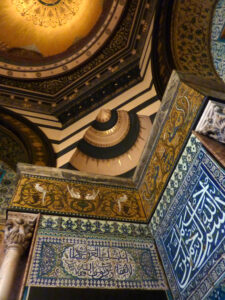
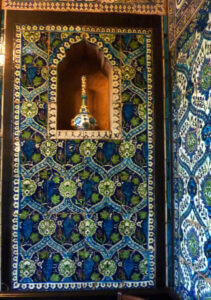
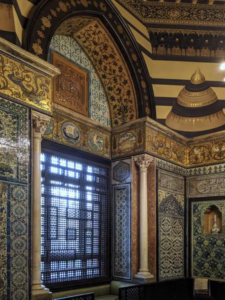
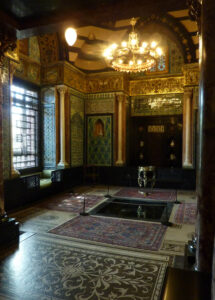
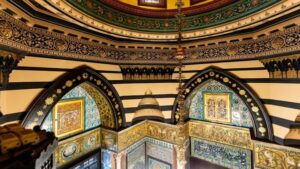
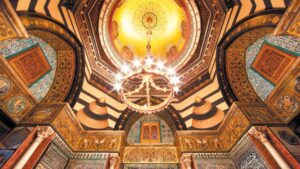
Leighton brought together a number of key practitioners, including designers William de Morgan and Walter Crane to bring his vision to fruition. Crane created the gold mosaic frieze which was made up in Venice and further tiles were collected for him by friends and colleagues, forming one of the most important collections in the country.
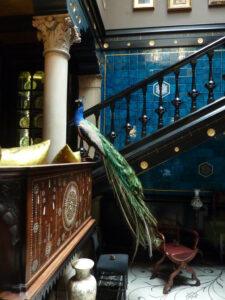
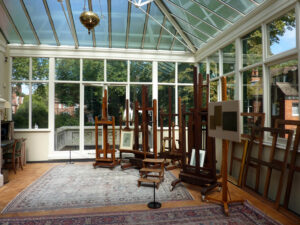
Duly inspired you can then skip across beautiful Holland Park and take yourself to Portobello Road market to start your own collection of artefacts!
References:
Official websites:
Sambourne House | RBKC Museums
Additional references
Leighton House: A Middle Eastern escape in the heart of London | Middle East Eye
All location photographs by Theodora Philcox except where otherwise stated.

Leave a Reply